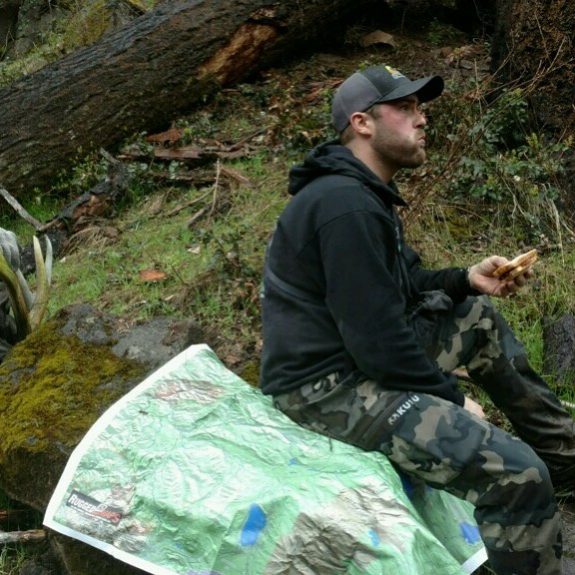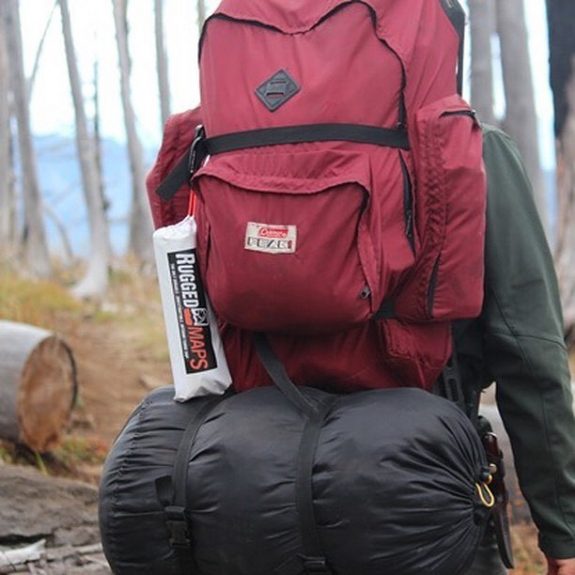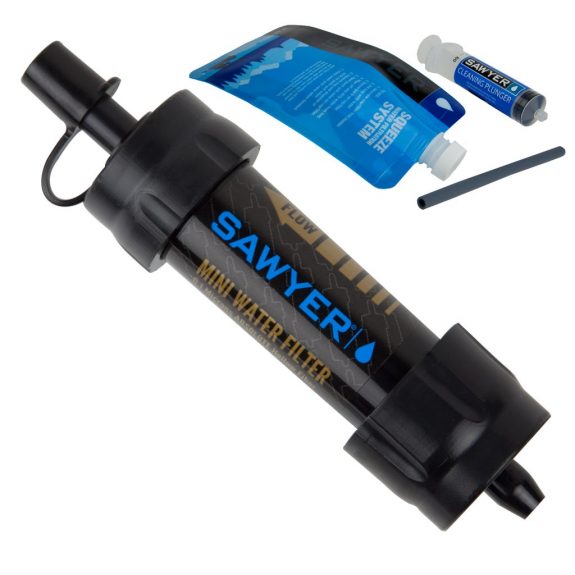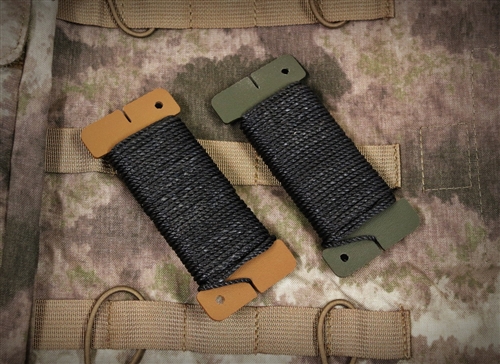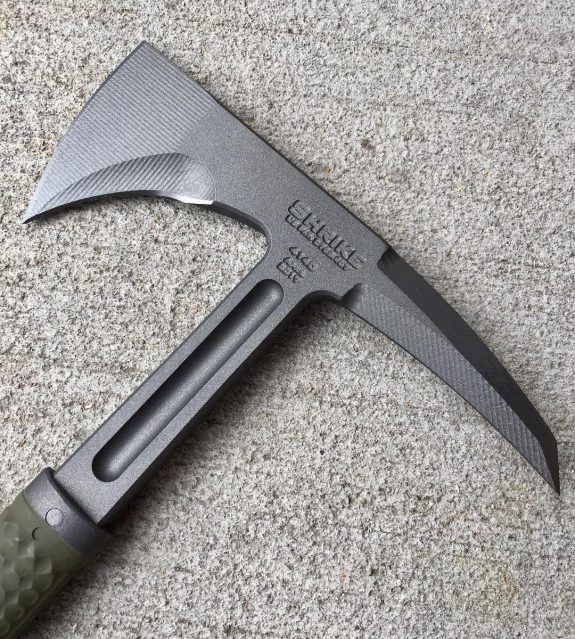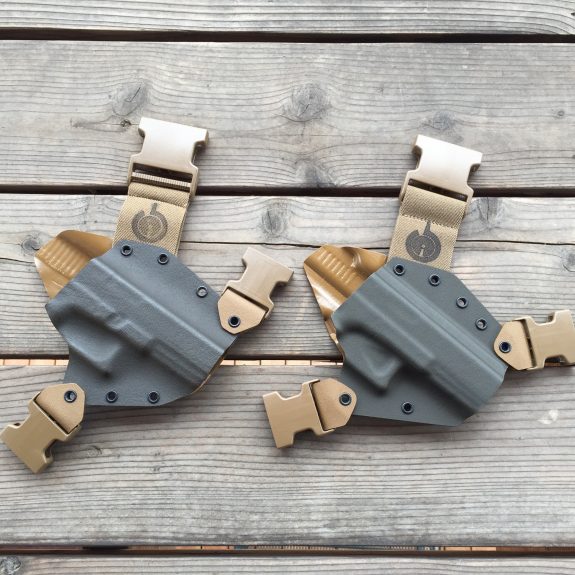If you need a lightweight map that resists tearing, the elements, and can stand up to constant folding and unfolding – take a look at Rugged Maps. Their 34″ x 44″ maps are printed on a durable fabric. Rugged Maps goes so far as to call the fabric indestructible. They offer a variety of maps including USGS 7.5 Minute Topos, Game Management Units, nautical maps, and more. They can even work with you to create a custom map.
Archive | Preparedness
Sawyer Squeeze and Mini Water Filters
When it comes to outdoor equipment (or really anything) the best is rarely cheap. That is exactly what makes the Sawyer Squeeze and Mini Water Filters standout. They are the best trail filters that I have used and they are also the cheapest. That is a tough combination to beat.
I’ve owned a Sawyer Squeeze since before 2013 when they updated the model to include some new fittings and redesigned bags (much needed, the original bags don’t hold up well). That little filter has produced a lot of clean drinking water in that time and it has earned a permanent place in my hiking pack. I have had the Sawyer Mini for much less time but it is equally easy to use, has more versatile connections, is smaller, weighs less, and costs even less (I’ll compare the two later in this article).
Rather than go on and on about these filters, I’ll lay out what I like about both of them. Then, I’ll address them each individually.
What I like about both filters:
- Compact and lightweight – The Squeeze weighs in at 3 ounces and the Mini at 2 ounces. Both are considerably smaller than any of my previous filters. They are small and light enough to live in my pack – even if I am just on a day hike and carrying all the water I will need.
- Affordable – These cost between $20-30 for the basic packages. That is less than 1/4″ the cost of my previous ceramic trail filter. The entire filter with bag(s) cost less than just the replacement filters my old system.
- Durable – These are made from plastic with no ceramic elements. They can take a beating.
- Reliable Filtering – Both filters boast an absolute .1 micron rating. They get the nasties out.
- Easy to Use – There is no pumping, no inlet hose to clean, no ceramic filters to clean, and no fuss. Squeeze dirty water through and drinkable water comes out. It’s easy.
- Versatile – These work with the provided bags but they also thread right onto standard 20 ounce and 2 liter bottles. They can be set up as inline filters on your hydration bladder or as gravity filters on something like an MSR Dromedary Bag.
What I like about the Squeeze:
- The Squeeze filter has more filter media than the Mini so it is slightly easier to drink from. If you plan to use the simplest set up, which would be to gather unfiltered water in bags/bottles and drink directly from them, the Squeeze works best but…
What I like about the Mini:
- It is smaller and lighter than the Squeeze and can be used in all the same ways.
- It has more versatile attachment points built in.
- It costs less.
The next obvious question is which should you choose. I would (and did) probably just buy the Mini in most cases. It does everything the Squeeze does minus a little flow rate. It’s smaller, lighter, costs less, and a bit more versatile. However, the Squeeze is a bit easier to use in the most straightforward setup so it may be a better choice for cavemen.
Tips:
- If you are using Sawyer’s water bags, roll them like a toothpaste tube instead of squeezing. They last longer that way.
- Don’t let your filter freeze (true for all filters, not just these). It can wreck the filter media and there is really no practical way to test the Sawyer filters for damage. Bring it in your sleeping bag at night and tuck it inside your coat during the day to prevent freezing. If you think it froze, replace it.
- 2 Liter bottles (or any bottles you can scavenge) are great for use with these filters. They are light weight and can be squeezed hard without breaking. Keep the cap so you can squeeze the air out and reseal to take up less space in your pack.
- I know Sawyer has improved their bags but I have trust issues with them due to my original bags failures. Evernew makes great water bags that have compatible threads. I own several and greatly prefer them to the Sawyer bags. The threads on Platypus bags don’t quite match but some users say they can get them to work.
- Filling water bags completely full unless you have some tricks up your sleeve. Blow them up with your mouth before submerging or place them under falling water to make filling easier. You can also make a lightweight scoop by cutting the top off of a bottle and capping it. The scoop makes it easy to get the last few ounces of water into the bag.
- Even if you don’t hike and hate the outdoors, these are so compact and light that they are right at home in a car kit or “bug out bag”. I use a rubber band to wrap a water bag around the filter so it stays compact. You can add a short section of tubing so you can drink right from the source if necessary.
- They are so small and light, you might even want to carry two – especially in cold weather.
If they were already convenient enough… You can stroll right into most Walmarts and buy them. They are available with a dizzying array of options and even multi-packs. I generally just buy the basic set up and I bought my Mini on Amazon for less than $20.
Sagewood Gear Spool Card with Bank Line
Bank line is a great cordage to carry for use in the outdoors. It packs smaller than paracord, ties well without slipping, and is very strong. Like any other type of cord, it turns into a tangled mess if you don’t take care of it. That is where the new Sagewood Gear Spool Card comes in.
The Spool Card is designed to hold 50 feet of bank line. It is made from .093″ kydex and features a simple retention notches at both ends of the card. The notches allow you to secure the end of the bank line to ensure it doesn’t come unraveled in your pack. When you need cord, you just spool out as much as you need, cut it, and then secure the end in the closest notch. The Spool Card comes pre-loaded with bank line.
Sneak Peek: Updated RMJ Tactical Shrike
When you picture an RMJ Tactical tomahawk in your mind, there is a good chance you picture the Shrike with its distinctive, drop forged construction. We reported months ago that the Shrike was going to see some changes and would be machined from billet rather than drop forged.
RMJ recently released a first look at the new machined Shrike (below). Everything that made the Shrike great is still intact. The thin tanto spike that easily fits inside the hasp of many padlocks is still there. The wicked sharpened beard is still in place. It also looks like RMJ used lightening cuts similar to other machined tomahawks in their line to preserve the Shrike’s balance.
Review: GunfightersINC Kenai Chest Holster Gen 2
I’ve professed my appreciation of the Kenai Chest Holster from GunfightersINC on these pages before. It is a handy holster to have if you spend time in places with large, sharp toothed critters wearing gear like a backpack or hip waders that hinder traditional carry methods. It is, in my opinion, the most modern and best iteration of a classic guide holster… Then GunfightersINC went and changed it!
Lucky for us, they made it better.
Better Holsters Through Better Manufacturing
To understand the improvements in this holster, you have to understand a little bit about how kydex holsters are made. The kydex is heated until it becomes pliable, then it is pressed over a form of some kind and allowed to cool. The kydex (or similar material) then hardens as it cools, retaining the imprint of the form. That is the basic overview but the exact ways all those steps are accomplished has changed over the years.
On the original Kenai, the two holster halves where molded over the form with blocking in place for things like slide stop levers, extended barrels, or anything else that either needed to be accommodated or that would foul the draw stroke. The holster was molded in two halves, roughly equal in depth, and joined together to make an entire holster. At some point, the part of the holster that received the shoulder strap would be reheated (this sometimes shows as a shiny spot on the kydex) to be slightly reshaped to receive the strap. The holster body was finished by polishing edges, adjusting fit, etc. GunfightersINC turned out great holsters using these methods.
GunfightersINC is now improving their processes from top to bottom. They are now machining their own custom molds and using vacuum forming to create their holster bodies. All of the improvements to their holsters have been made possible by these changes and the design flexibility, control, and definition that they make possible.
Kenai Chest Holster Gen 2 Improvements
The first thing you will notice when you look at both holster bodies is that the Gen 2 version has much better definition – the lines are more crisp. That translates to a cleaner looking holster and, more importantly, it also translates to improved retention, a smoother draw stroke, and a more distinct click-in/click-out. This kind of definition is really only possible with modern vacuum forming.
When you dive a little deeper, you see improved blocking and molding. My Gen 2 holster body is molded for a Glock 17 so you see things like a channel that allows the slide stop to run all the way out of the holster without touching anything, the slide lock area is no longer molded creating a potential unwanted drag on the draw stroke, the magazine release is partially shielded to prevent accidental release, and the retention pad in the trigger guard is large and made to a consistent depth.
If you dive deeper still, you’ll notice GunfightersINC taking full advantage of their new manufacturing processes to really get the most out of the Kenai Chest Holster. The accommodation of the shoulder strap is actually molded into the back plate of the holster. This saves a manufacturing step and creates a stronger, cleaner holster overall. Finally, the two halves of the Kenai area actually molded to different depths with the majority of the pistol being molded into the front panel of the holster. This allows the Kenai to lay flatter, closer, and more comfortably against the wearer.
Wrap Up
GunfightersINC didn’t just redesign a holster, they redesigned how they make the holster. The result is more control over the end product, easier accommodation of various options, and, most importantly, better holsters for the customer. You can expect to see these manufacturing improvements touching all the holster in the GunfightersINC line up.
See our review of the original Kenai Chest Holster for more information on its background and use. Check out GunfightersINC to learn more about the Kenai Chest Holster or purchase your own.

